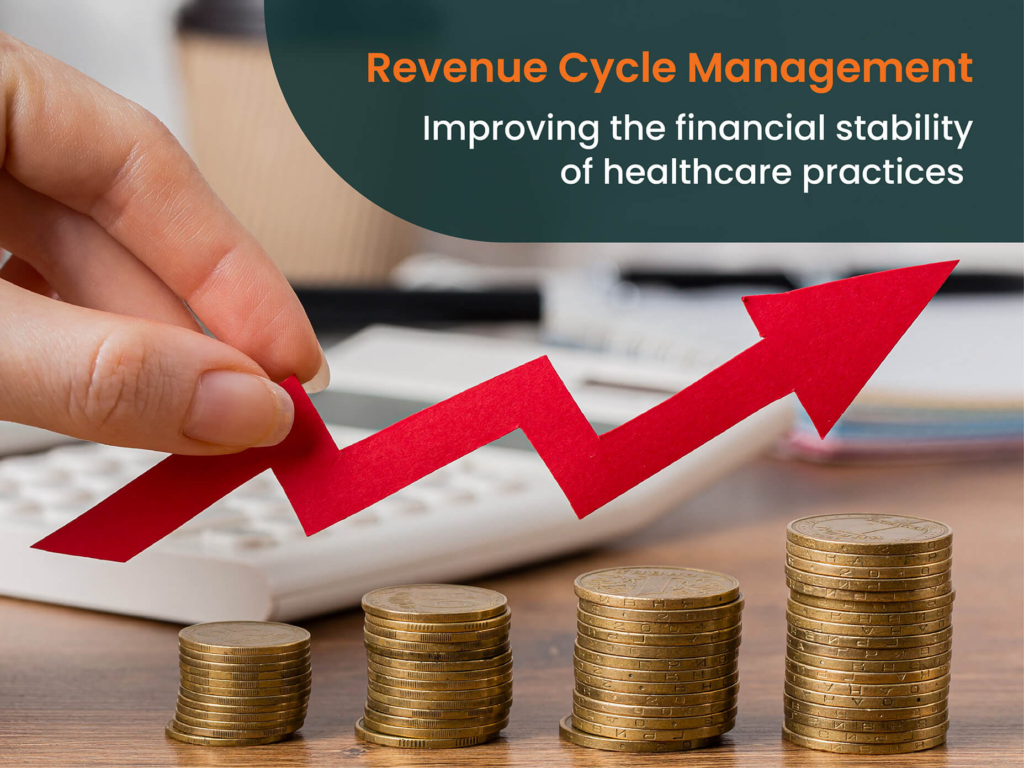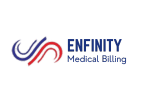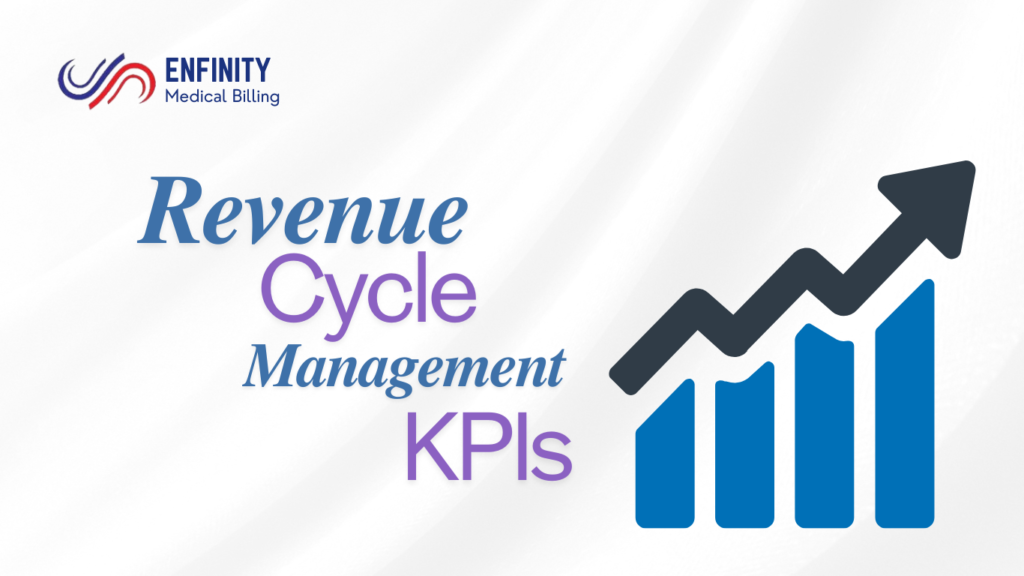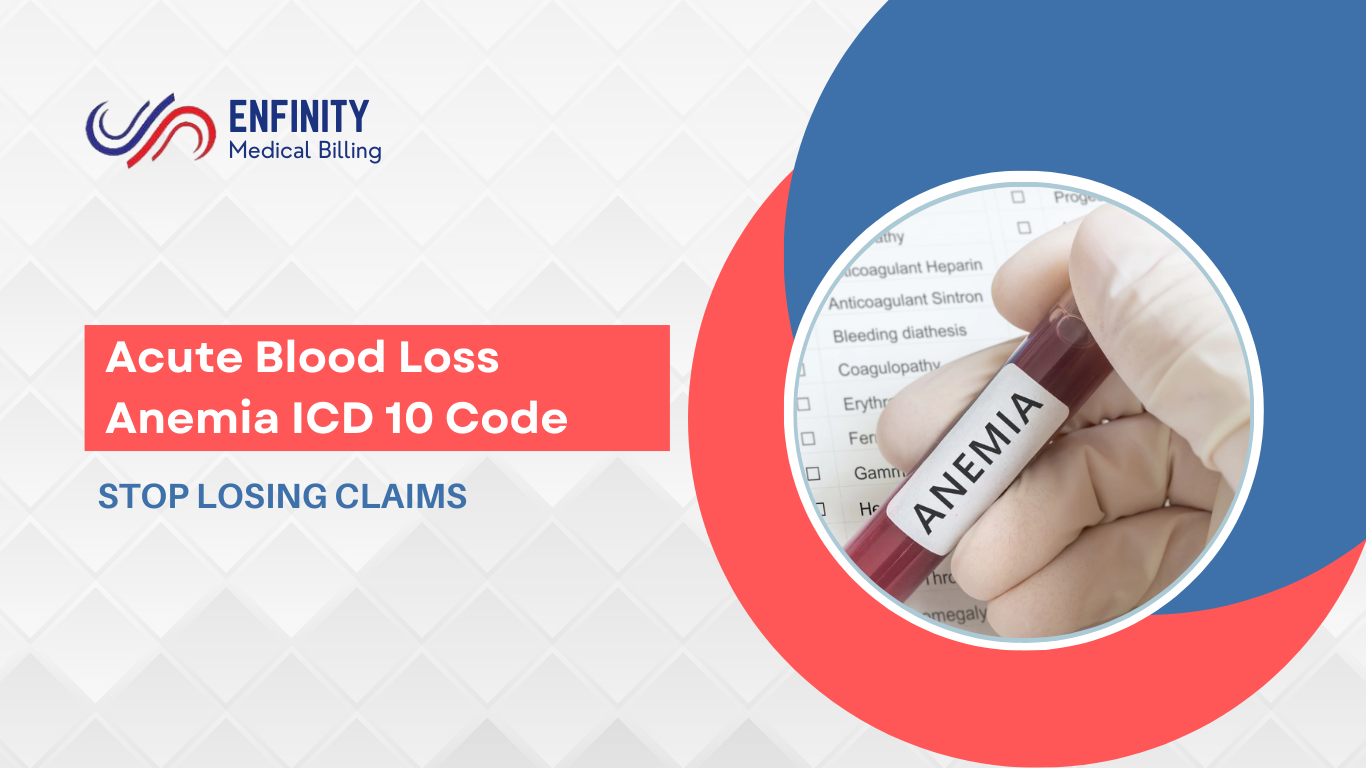Healthcare clinics must use Revenue Cycle Management (RCM) in order to be paid for the services rendered on schedule and in the appropriate quantity. Key performance indicators (KPIs) that provide a thorough understanding of cash collection, operations, and the potential revenue lost in the normal course of business. tracking and analyzing these medical billing performance indicators, healthcare providers can significantly improve RCM efficiency and optimize healthcare revenue. The blog lists the top 10 Revenue Cycle Management KPIs. What are the positive effects of each measure provision on health, and how may they be improved?
What is Revenue Cycle Management (RCM)?
In order to cover the full patient service revenue cycle, Revenue Cycle Management (RCM), sometimes referred to as revenue cycle management, entails performing a number of financial and administrative tasks. This includes handling patient and appointment registration, coding, invoicing, and revenue collection following service delivery. An RCM system’s main objective is to ensure that healthcare services are paid for promptly while minimizing billing errors, payment rejections, and income loss. Monitoring healthcare financial metrics and KPIs in medical billing is vital to ensuring that all stages of the revenue cycle are optimized, minimizing losses and improving revenue generation. These metrics provide invaluable insights into the overall efficiency of healthcare revenue cycle KPIs, ensuring that no revenue is left behind.
Top 10 Revenue Cycle Management KPIs – Key performance indicators in healthcare
To achieve healthcare revenue, healthcare providers must monitor specific Key Performance Indicators for Healthcare Revenue Cycle. These revenue cycle key performance indicators offer insights into operational RCM performance, highlight areas of improvement, and ensure sustainable revenue growth. Below are the top 10 revenue cycle performance metrics every provider should track:
1. Days in Accounts Receivable (A/R)
Days in Accounts Receivable (A/R) is one of the most important of Revenue Cycle Management KPIs metrics that evaluates the average time it takes for healthcare providers to collect payments after rendering services. A lower A/R days value signifies faster revenue collection and reflects an efficient billing and payment process. Ideally, healthcare organizations should aim to keep A/R days below 40 to maintain healthy cash flow. This metric is calculated by dividing the total accounts receivable by the average daily revenue, offering a clear snapshot of payment timeliness. To improve performance, providers should consistently monitor overdue accounts, identify bottlenecks in the collection process, and leverage electronic payment solutions to expedite transactions. Typical benchmark for A/R days is under 40 to maintain healthy cash flow.
2. Net Collection Rate
Net Collection Rate is a vital metric in healthcare revenue cycle management Key performance indicators, reflecting the percentage of payments collected out of the total expected payments after adjustments. On average, a healthy Net Collection Rate is considered to be between 95% and 98%, with anything below 90% indicating inefficiencies in the payment collection process. To calculate this rate, divide the total payments collected by the total net charges (after adjustments) and express it as a percentage. For example, if a healthcare provider collects $900,000 in payments from total expected payments of $1,000,000 after adjustments, the Net Collection Rate would be 90%. Improving this rate involves focusing on addressing claim denials efficiently and ensuring accurate billing protocols. With denial rates averaging around 8% to 10% of total claims, timely denial management can help reduce lost revenue. Maintaining precise coding, billing practices, and follow-up procedures are crucial for enhancing the collection rate and ensuring that the organization captures the maximum allowable reimbursement. This healthcare financial metric is essential for evaluating the success of your billing team’s efforts to improve healthcare healthcare revenue cycle management KPI.
3. First Pass Resolution Rate (FPRR)
First Pass Resolution Rate (FPRR) measures the percentage of claims paid on the first submission without requiring resubmission or appeal. A high FPRR is essential for minimizing administrative burdens and accelerating cash flow. On average, a good FPRR is typically around 85% to 90%, with anything below 80% suggesting a need for process improvements. To track FPRR, compare the number of clean claims paid on the first attempt to the total number of claims submitted. For example, if a healthcare provider submits 1,000 claims and 900 claims are paid on the first attempt, the FPRR would be 90%. To enhance revenue cycle metrics, it is crucial to perform detailed pre-submission claim checks to ensure that all required information is correct, reducing errors and preventing delays in payment. By focusing on these checks and ensuring accurate coding, healthcare providers can significantly improve their medical billing performance indicators and ensure that claims are submitted accurately the first time, streamline their revenue cycle, and reduce administrative costs.
4. Claim Denial Rate
Claim Denial Rate is a critical KPI that calculates the percentage of claims denied by payers. A low denial rate reflects efficient billing and coding practices, with an ideal rate typically under 5%. A denial rate above 10% often signals underlying issues that need to be addressed. To evaluate healthcare revenue cycle management KPI, assess the ratio of denied claims to the total number of claims submitted. For example, if 100 claims are submitted and 8 claims are denied, the denial rate would be 8%. To improve this revenue cycle performance metrics, healthcare providers should study common denial reasons and identify recurring issues. Common denial reasons often include coding errors, incorrect patient information, and eligibility issues. Investing in coder training and adopting robust pre-submission checks can significantly reduce denials, improve claim accuracy, and streamline the revenue cycle, ultimately improving cash flow and operational efficiency.
Boost Revenue with Optimized Accounts Receivable Workflows
5. Cost to Collect
Cost to Collect is a key metric that measures the expenses incurred to collect payments as a percentage of the total revenue collected. A lower cost to collect signifies more efficient processes, and the medical practice financial benchmark typically falls between 3% to 6%. To calculate this metric, divide total revenue cycle costs by the total collections and express the result as a percentage. For example, if a healthcare provider incurs $100,000 in revenue cycle costs and collects $1,500,000, the cost to collect would be 6.67%. To optimize RCM KPIs, healthcare providers should implement automated billing systems to streamline the process, reduce reliance on manual procedures, and minimize errors. By leveraging automation for tasks like claim submission, follow-up, and payment posting, providers can reduce administrative costs, speed up the collections process, and improve overall revenue cycle efficiency.
6. Bad Debt Rate
Bad Debt Rate is a healthcare billing KPI that tracks the percentage of uncollectible accounts against total revenue. A high bad debt rate signals inefficiencies in patient payment collection and can be a significant concern for healthcare providers. The ideal bad debt rate is generally below 5%, but anything above 8% indicates a need for improvement. To calculate this metric, divide the total amount of bad debts by the overall revenue and express it as a percentage. For example, if a healthcare provider has $100,000 in bad debt and $1,500,000 in total revenue, the bad debt rate would be 6.67%. To reduce medical billing performance metric, providers should strengthen their upfront payment policies, ensuring that patients understand their financial responsibilities before services are rendered. Additionally, offering patient-friendly installment payment options can increase collection rates and reduce the likelihood of bad debt, while also improving patient satisfaction and compliance.
Incorrect Place of Service codes often lead to denials, impacting reimbursement and delaying revenue.
7. Charge Capture Rate
Charge Capture Rate ensures that all services provided are accurately recorded and billed, helping to prevent revenue loss due to missed charges. An efficient charge capture process is critical, as missing charges can significantly impact the financial health of a healthcare provider. The ideal charge capture rate is close to 100%, though achieving this can be challenging in some settings. To calculate this KPI, compare the total charges billed to the total charges for services provided. For example, if $1,000,000 in services were provided and $950,000 in charges were billed, the charge capture rate would be 95%. To enhance the charge capture rate, healthcare providers should utilize comprehensive Electronic Health Records (EHR) systems to streamline the process. EHR systems can help minimize unbilled services by automating charge entry, integrating charge capture into the clinical workflow, and ensuring accurate documentation of all services rendered. This approach not only reduces revenue leakage but also supports compliance and operational efficiency.
8. Clean Claim Rate
Clean Claim Rate measures the percentage of claims submitted without errors, directly impacting the speed and accuracy of reimbursement. A high clean claim rate, typically above 90%, is important for reducing delays in reimbursement and minimizing administrative costs. To calculate this KPI, determine the percentage of error-free claims submitted out of the total claims sent. For example, if1,000 claims are submitted and 950 claims are error-free, the clean claim rate would be 95%. To enhance the clean claim rate, healthcare providers should schedule regular staff training to ensure that coding and billing practices remain up to date. Additionally, adopting sophisticated claim-scrubbing software can help detect and correct errors before claims are submitted, further improving the accuracy of claims and reducing the risk of denials or delays. These practices not only speed up the reimbursement process but also improve overall operational efficiency and revenue cycle management. Clean Claim Rate is an important healthcare revenue optimization KPI, as it ensures claims are paid faster and with fewer rejections.
9. Average Reimbursement Rate per Encounter
Average Reimbursement Rate per Encounter tracks the average payment received per patient encounter, providing valuable insights into healthcare financial metric performance at the service level. This metric helps healthcare providers assess how effectively they are reimbursed for the services they provide. The ideal reimbursement rate can vary widely depending on factors like payer mix and service type, but consistently tracking this rate helps identify areas for improvement. To calculate this metric, divide the total reimbursement received by the number of patient encounters within a given period. For example, if $500,000 in payments is received for 1,000 patient encounters, the average reimbursement rate per encounter would be $500. To optimize this rate, healthcare providers should periodically evaluate payer contracts to ensure they are receiving fair reimbursement rates and adjust their billing strategies accordingly. Additionally, ensuring coding accuracy is crucial for maximizing reimbursements and avoiding underpayments. By improving coding precision and staying current on payer policies, providers can enhance the average reimbursement rate and better understand their healthcare revenue cycle management metric..
10. Patient Payment Rate
Patient Payment Rate measures the percentage of payments collected directly from patients, revenue cycle KPIs that has gained increasing importance with the rise of high-deductible health plans. As patients are shouldering a larger portion of healthcare costs, ensuring efficient collection of patient payments has become crucial for financial sustainability. A strong patient payment rate is typically above 30% to 40%, but this can vary based on the provider’s payer mix and patient demographics. To calculate this metric, divide the total amount collected from patients by the total amount owed by patients. For example, if a healthcare provider collects $200,000 in patient payments from a total owed amount of $500,000, the patient payment rate would be 40%. To improve this rate, providers should offer intuitive payment platforms that make it easy for patients to pay online, via mobile apps, or through other convenient methods. Maintaining transparent billing systems that clearly outline patient responsibilities and payment options can also encourage timely payments, reducing outstanding balances and improving cash flow.
Track Denials Effectively to Improve RCM Performance

Conclusion
Tracking and optimizing these 10 Revenue Cycle Management KPIs can significantly improve the financial health of a healthcare organization. By focusing on these healthcare key performance indicators for medical coding insights and implementing effective strategies, providers can reduce inefficiencies, enhance cash flow, and ensure a sustainable revenue cycle. Regularly reviewing these metrics enables proactive decision making and continuous improvement, securing the financial stability of healthcare operations. These medical billing performance indicators are essential to optimizing RCM efficiency metrics and enhancing overall healthcare billing KPIs for sustainable success.
FAQs
What are the most important KPIs in revenue cycle management?
Key RCM KPIs include Days in Accounts Receivable, Net Collection Rate, Claim Denial Rate, First-Pass Resolution Rate, and Charge Capture Rate. These metrics help track financial performance and improve RCM efficiency.
How can healthcare providers improve their net collection rate?
Healthcare providers can improve the Net Collection Rate by optimizing billing practices, ensuring accurate coding, following up on unpaid claims, and reducing denials through better payer communications.
What is a good days in accounts receivable benchmark for medical practices?
Good benchmark for Days in Accounts Receivable (A/R) is typically under 40 days. Lower A/R days indicate efficient billing and faster payment collection.
How do you calculate the clean claim rate in healthcare billing?
Clean Claim Rate is calculated by dividing the number of claims submitted without errors by the total number of claims submitted, then multiplying by 100 to get a percentage.
Why is monitoring the claim denial rate crucial for healthcare providers?
Monitoring the Claim Denial Rate helps identify billing errors, improve coding accuracy, and streamline claims processing. Reducing denials ensures faster payments and improves cash flow.
How does the first-pass resolution rate impact revenue cycle efficiency?
High First-Pass Resolution Rate indicates that claims are paid the first time without needing resubmission. This improves revenue cycle efficiency by reducing administrative costs and speeding up payments.






